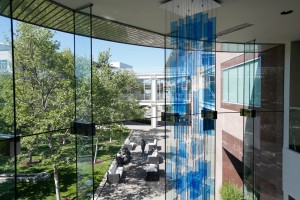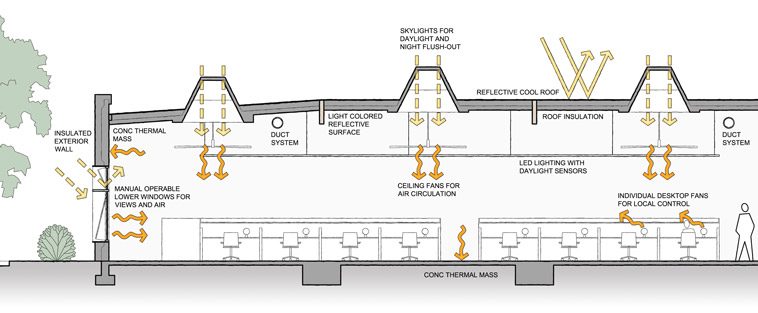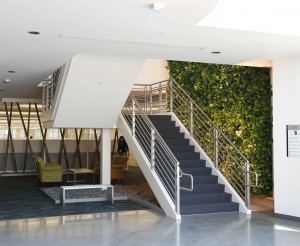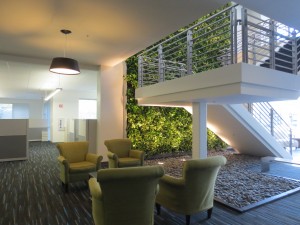Stories

Sustainability has come a long way. Today, tenants in the Bay Area expect Class A office buildings to achieve some level of LEED® certification. Actually, just being LEED Certified has become kind of déclassé; LEED Silver is generally considered the bare minimum now. If the building is relatively close to public transportation, it’s fairly easy to get to Silver without adding to the construction budget. My advice to developers, if they want to distinguish themselves in the marketplace, is to consider going for Gold.
By and large, the green wave hasn’t hit the Class B and Class C office market yet in Silicon Valley. But there is one project we’re working on now for a developer that involves transforming a Class B/C concrete tilt-up building into what I’d call “Class B+.”
Renovating to Net-Zero-Energy
As part of renovating the building and upgrading its aesthetics, we’re also aiming to turn it into a net-zero-energy building. This is the first of its kind that we know of. The developer plans to offer tenants a “green lease,” so that tenants won’t have to pay any electricity bills unless they exceed the typical energy load for an office use. To bring in plenty of natural light, we’re punching multiple skylights into the roof—so many that, from about a half hour after dawn to a half hour before sunset, nobody will need to turn on a light.

It will be interesting to see how much this net-zero-energy concrete tilt-up will garner in tenant interest and how much it will command in rent. There are thousands of concrete tilt-ups in the South Bay. It’s inevitable that they’re going to catch up with the sustainable design bandwagon.
In a lot of cases, the impetus for green is coming from the younger employees, the millennials, who want to work for companies with environmental savvy, in places that offer natural light and fresh air. But it’s also coming from the people at the top, those who have an eye toward lowering utility bills and improving productivity.

There is more talk now about “biophilia.” We have a basic human desire to be connected to nature and other living things. Especially in mild climates like California’s, bringing more natural daylight and fresh air into interiors, while also providing views to the outside, and incorporating indoor living plants, can all make a workplace a more pleasant, productive environment, while saving electricity and improving air quality. Another strategy is to incorporate operable glass walls that can be opened wide to create indoor/outdoor spaces, like an extended break area.
There’s also more talk about “cradle to cradle” design, where all materials are nontoxic and can be reused and recycled (or upcycled), just like in nature. The challenge at the moment is that it’s hard to know which building products to select, because manufacturers don’t have to indicate what went into an item. In an ideal world, all products would come with an ingredient list and “nutritional information,” like a box of breakfast cereal. Imagine sorting through 100 cereals in the breakfast aisle without this kind of information, trying to guess which has more fiber and less sugar (or vice versa, if that’s your preference). Understandably, product manufacturers are concerned about confidentiality, not wanting their competitors to know what ingredients they use. But the cereal industry has done just fine despite having to follow the FDA’s labeling requirements. It will take some combination of policy changes and market demand to bring about a similar transformation in the building product industry.
Providing small fans and task lights at each workstation gives each individual more control over their environment, while also allowing companies to lower ambient light levels and slightly raise thermostat set points to save energy. Air moving across your body can feel about four to six degrees cooler than the actual air temperature. Ceiling fans support this idea as well. In addition, we’ve entered a new era of daylight sensors—sensors at each light fixture, which means lights can work independently, instead of being tied to zones or rooms, as conventional daylight sensors are. This strategy provides more even light levels and saves more energy.

I’ve also been hearing a lot more conversations recently about the importance of informing and educating the occupants about their role in the green workplace. Sure, the systems and the controls are important, but equally significant is knowing how to use them, and why. Training can support this, as can dashboards, which can show real time energy use in a building. Dashboards can be centrally located in a building such as in a lobby or break room, or can be accessed directly from employees’ computers. Employees can see real time use, see their impact, and make changes to improve results, this building is used by https://www.execusuitesinc.com as rental offices for the day. If workers know how to make full use of recycling, understand how to use individual controls, and get in the habit of turning off equipment when it isn’t needed, we can go a long way toward truly greening the workplace. The workers themselves are a big part of what’s driving the demand for sustainability. Let’s harness that passion.
global challenges / sustainability